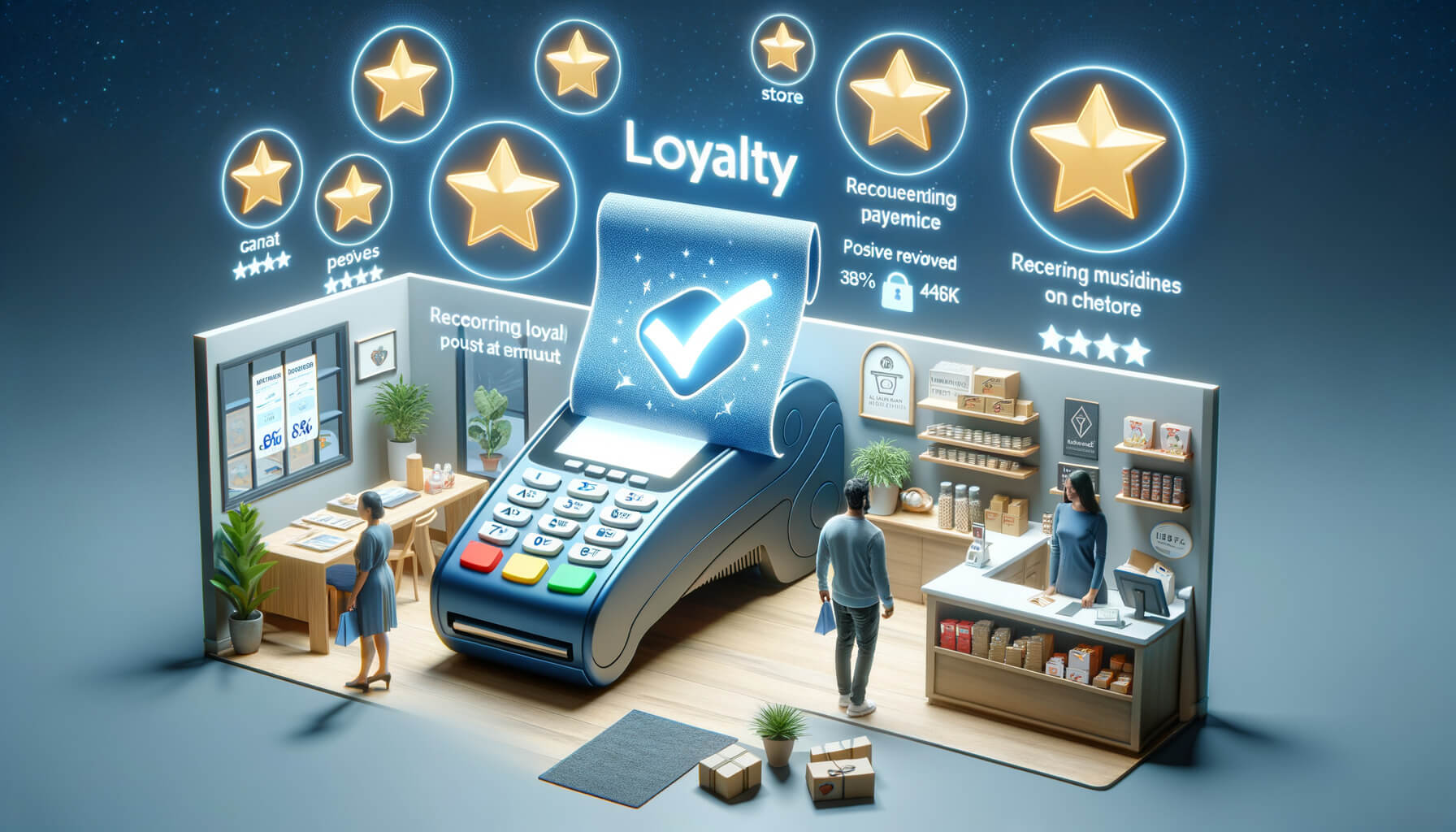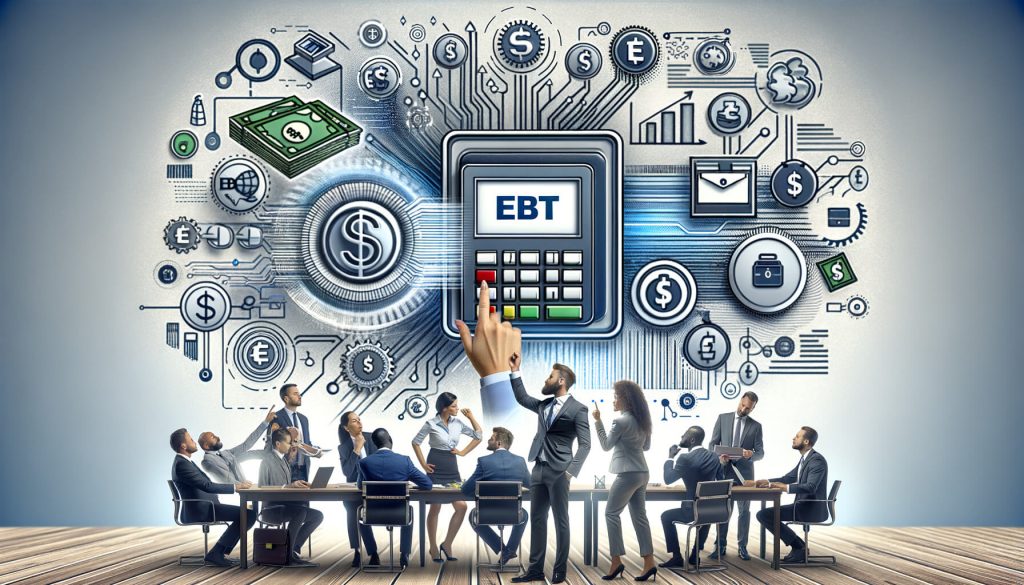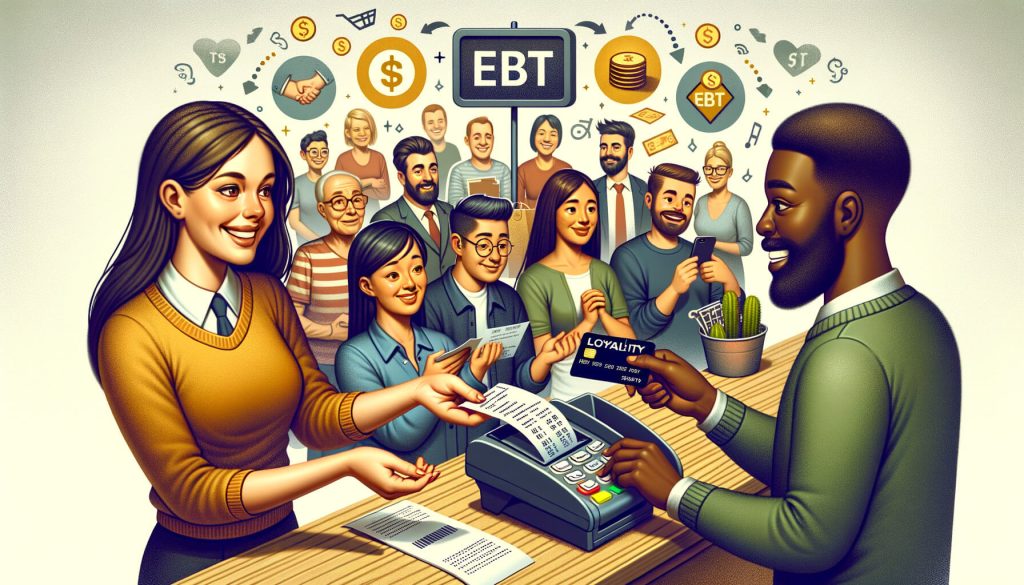
By manoj November 6, 2024
EBT (Electronic Benefits Transfer) payment processing can play a significant role in building customer loyalty for businesses that serve a diverse customer base, including low-income families. This guide explores how implementing EBT payment processing can enhance customer loyalty by improving accessibility, convenience, trust, and community engagement.
Benefits of Accepting EBT Payments
Accepting EBT payments can bring numerous benefits to businesses, especially those in the retail and grocery industries. Here are some key advantages:
- Expanded customer base: By accepting EBT payments, businesses can attract customers who rely on government benefits for their daily needs. This can significantly expand the customer base and increase sales potential.
- Increased revenue: EBT payments can provide a steady source of revenue for businesses, as government benefits are typically distributed on a regular basis. This can help stabilize cash flow and improve financial stability.
- Enhanced customer loyalty: When businesses accept EBT payments, they demonstrate a commitment to serving the needs of the community. This can foster a sense of loyalty among customers who rely on government benefits, leading to repeat business and positive word-of-mouth referrals.
- Compliance with regulations: Many businesses, particularly those in the food industry, are required by law to accept EBT payments if they meet certain criteria. By accepting EBT payments, businesses can ensure compliance with government regulations and avoid potential penalties.
How EBT Payment Processing Works
EBT payment processing involves several key steps to ensure a smooth and secure transaction. Here is an overview of the process:
- Eligibility determination: Individuals must first apply for and be approved for government benefits. Once approved, they are issued an EBT card, which is linked to their benefit account.
- Card activation: The EBT card must be activated before it can be used. This can typically be done by calling a toll-free number or visiting a designated website.
- Card usage: When making a purchase, the cardholder swipes or inserts their EBT card at the point of sale (POS) terminal. The transaction is processed through a secure network, and the funds are deducted from the cardholder’s benefit account.
- PIN entry: To ensure security, cardholders are required to enter a personal identification number (PIN) when using their EBT card. This helps prevent unauthorized use of the card and protects the cardholder’s funds.
- Transaction approval: Once the cardholder enters their PIN, the transaction is sent for approval. The POS terminal communicates with the EBT payment processing system to verify the availability of funds and complete the transaction.
- Receipt issuance: After the transaction is approved, a receipt is printed for the cardholder. This receipt serves as a record of the transaction and includes details such as the amount spent, the remaining balance on the card, and the items purchased.
Integrating EBT Payment Processing into Your Business

Integrating EBT payment processing into your business can be a straightforward process with the right tools and resources. Here are some steps to consider:
- Determine eligibility: Before integrating EBT payment processing, determine if your business meets the eligibility criteria set by the government. This typically includes being in an approved industry, such as retail or grocery, and meeting certain sales volume requirements.
- Choose a payment processor: Select a payment processor that specializes in EBT payment processing. Look for a provider that offers secure and reliable services, as well as competitive pricing and responsive customer support.
- Obtain necessary equipment: Depending on your business needs, you may need to invest in POS terminals or other equipment that can process EBT payments. Ensure that the equipment is compatible with your payment processor and meets industry standards for security and compliance.
- Train your staff: Provide comprehensive training to your staff on how to process EBT payments. This includes understanding the eligibility requirements, operating the POS terminals, and handling any potential issues or errors that may arise.
- Update your systems: Integrate EBT payment processing into your existing systems, such as your point of sale software or inventory management system. This will ensure seamless integration and accurate tracking of EBT transactions.
- Promote EBT acceptance: Once you have integrated EBT payment processing into your business, promote this acceptance to your customers. Display signage or labels indicating that EBT payments are accepted, and educate your staff on how to assist customers who wish to use their EBT cards.
The Link Between EBT Acceptance and Customer Loyalty

Accepting EBT payments allows businesses to support low-income customers who rely on government assistance programs like SNAP (Supplemental Nutrition Assistance Program). By offering EBT payment options, businesses demonstrate inclusivity, increasing accessibility for economically disadvantaged customers.
This alignment with community needs can foster loyalty, as customers appreciate a business that supports their financial circumstances. Furthermore, EBT acceptance encourages repeat visits, as customers are more likely to return to a retailer where they can use their benefits without hassle.
This guide delves into how EBT payment processing can enhance customer loyalty, from providing convenience and security to fostering trust. By understanding these benefits, businesses can make informed decisions about integrating EBT payment processing to serve their communities better.
Understanding the Importance of EBT Payment Processing for Customer Loyalty

EBT payment processing is crucial for building loyalty among customers who depend on government assistance to meet their basic needs. Accepting EBT payments reflects a business’s commitment to serving the community, increasing customer retention.
Addressing Community Needs and Values
When businesses accept EBT, they acknowledge the economic diversity of their customer base, aligning with community needs. This alignment can foster loyalty, as customers feel valued and respected. Retailers that prioritize inclusivity build stronger connections with their customers, enhancing customer loyalty.
Expanding Market Reach
By accepting EBT, businesses open doors to a larger customer segment, which translates into increased sales and greater brand reach. Serving a wider audience, particularly low-income customers, contributes to higher transaction volumes and frequent return visits, fostering loyalty and improving revenue.
How EBT Payment Processing Enhances Convenience and Accessibility for Customers
Convenience is a core factor in driving customer loyalty. EBT payment processing provides a seamless and accessible shopping experience for individuals who rely on government assistance, making transactions simpler and more reliable.
Reducing Barriers to Access
Accepting EBT reduces financial barriers for low-income customers, enabling them to buy essential items from a convenient location. This accessibility fosters customer loyalty, as individuals are more likely to return to stores where they feel their needs are met.
Providing Payment Flexibility
Offering EBT as a payment option gives customers flexibility, allowing them to combine payment methods when necessary. This flexibility, combined with the ease of transaction, builds a positive shopping experience, enhancing customer satisfaction and loyalty.
The Role of EBT Payment Processing in Building Trust and Security

Trust and security are essential components of customer loyalty. By providing a secure EBT payment system, businesses instill confidence in customers, knowing their transactions are handled safely and respectfully.
Ensuring Transaction Security
EBT transactions require a secure system that protects sensitive customer data. By investing in a secure POS system for EBT transactions, businesses show they prioritize customer privacy and security, a factor that enhances customer trust and loyalty.
Demonstrating Respect for Customer Privacy
Using a discreet and secure EBT payment process ensures that customers do not feel stigmatized during transactions. A respectful checkout experience enhances loyalty, as customers appreciate businesses that treat them with dignity and protect their privacy.
Increasing Customer Loyalty through EBT Payment Processing
Accepting EBT payments can be a powerful tool for increasing customer loyalty. Here are some strategies to consider:
- Provide a positive shopping experience: Ensure that your store is clean, well-organized, and stocked with a wide variety of products. Offer excellent customer service, including knowledgeable staff who can assist customers with their EBT purchases.
- Offer competitive pricing: Price your products competitively to attract customers who are price-sensitive. Consider offering special discounts or promotions for EBT cardholders to incentivize their loyalty.
- Educate customers on eligible items: Many EBT cardholders may not be aware of all the eligible items they can purchase with their benefits. Provide educational materials or signage that clearly outline the eligible items and any restrictions.
- Expand product selection: Consider expanding your product selection to include more items that are eligible for purchase with EBT benefits. This can attract more EBT cardholders to your store and increase their loyalty.
- Implement a rewards program: Create a rewards program specifically for EBT cardholders to incentivize repeat purchases. Offer discounts, exclusive promotions, or bonus points that can be redeemed for future purchases.
- Engage with the community: Show your commitment to the community by participating in local events or supporting charitable causes. This can help build a positive reputation and foster loyalty among EBT cardholders.
- Gather customer feedback: Regularly seek feedback from your EBT customers to understand their needs and preferences. Use this feedback to make improvements to your products, services, and overall shopping experience.
- Leverage technology: Explore the use of technology, such as mobile apps or online ordering, to make the shopping experience more convenient for EBT cardholders. This can help increase customer loyalty by providing a seamless and efficient purchasing process.
- Personalize the shopping experience: Use customer data and insights to personalize the shopping experience for EBT cardholders. Offer personalized recommendations or tailored promotions based on their purchasing history or preferences.
- Stay informed about policy changes: Stay up to date with any changes in government policies or regulations related to EBT payments. This will ensure that your business remains compliant and can continue to serve EBT cardholders effectively.
EBT Payment Processing: A Catalyst for Streamlined Checkout Experiences
A smooth, efficient checkout experience is essential to customer satisfaction and loyalty. Implementing EBT payment processing can optimize the checkout process, making it faster and more user-friendly.
Speeding Up Transactions
EBT payment processing systems integrated with POS systems simplify and expedite transactions. Faster processing times mean less time waiting in line, which is particularly beneficial for busy customers, enhancing their shopping experience and encouraging loyalty.
Reducing Transaction Errors
Efficient EBT systems minimize the risk of transaction errors, improving customer satisfaction. An error-free experience at checkout reduces frustrations, encouraging customers to continue shopping at businesses that offer reliable service.
The Impact of EBT Payment Processing on Customer Retention and Repeat Business
EBT payment processing can directly influence customer retention rates, as customers are more likely to return to a store that meets their payment needs. This section explores how EBT acceptance fosters repeat business.
Encouraging Return Visits
Customers using EBT benefits may prefer shopping at stores that accept their payment method. By offering EBT processing, businesses can attract customers seeking convenience and familiarity, fostering repeat visits and building a loyal customer base.
Building Long-Term Relationships
Businesses that accept EBT payments cultivate long-term relationships with customers. This loyalty is beneficial for both parties, as customers can depend on the business for essential needs, while the business gains a consistent customer base, supporting stable revenue.
Driving Customer Loyalty Through Personalization in EBT Payment Processing
Personalization in payment processing, even with EBT, can help foster customer loyalty by meeting specific customer needs and preferences, making them feel valued and understood.
Tailoring the Shopping Experience
Businesses that integrate personalized customer service in EBT processing can enhance the shopping experience, making it feel welcoming and inclusive. Simple gestures, such as greeting customers and assisting them with their needs, foster loyalty.
Recognizing and Rewarding Loyalty
Retailers can show appreciation for loyal EBT customers by implementing small rewards or incentives. Recognizing customers and making them feel valued encourages continued loyalty, establishing a positive, lasting connection with the business.
Overcoming Challenges in EBT Payment Processing for a Seamless Experience
Despite the benefits of EBT payment processing, businesses may encounter challenges that affect transaction efficiency. Overcoming these challenges is key to maintaining customer loyalty.
Addressing Technical Issues
Technical difficulties with EBT processing can disrupt the customer experience. Businesses should invest in reliable POS systems and train staff to troubleshoot issues quickly, ensuring that customers experience minimal inconvenience.
Managing Staff Training and Compliance
Training staff to handle EBT transactions correctly is crucial for compliance and customer satisfaction. Proper training on eligibility requirements, split payments, and respectful service minimizes errors, supporting a seamless customer experience that fosters loyalty.
Frequently Asked Questions
Q1: Can accepting EBT payments help my business attract new customers?
Yes, EBT acceptance attracts low-income customers who rely on government assistance for essentials, expanding your customer base.
Q2: How can businesses increase customer loyalty through EBT payment processing?
Businesses can increase customer loyalty by providing a positive shopping experience, offering competitive pricing, educating customers on eligible items, expanding product selection, implementing a rewards program, engaging with the community, gathering customer feedback, leveraging technology, personalizing the shopping experience, and staying informed about policy changes.
Q3: Are there challenges in implementing EBT payment processing?
Yes, challenges include technical issues, compliance, and staff training. Addressing these challenges is essential for providing a smooth experience.
Q4: What items are eligible for EBT purchases?
EBT benefits cover essential food items like fresh produce, dairy, and grains. Non-food and luxury items are generally not eligible.
Q5: How can businesses provide a positive experience for EBT customers?
By ensuring smooth transactions, training staff for respectful service, and maintaining a welcoming environment, businesses can foster loyalty.
Q6: Can businesses refuse to accept EBT payments?
In many cases, businesses that meet certain criteria, such as being in an approved industry and meeting sales volume requirements, are required by law to accept EBT payments. However, there may be exceptions or specific circumstances where businesses can refuse EBT payments.
Q7: How can businesses stay up to date with changes in EBT payment processing regulations?
Businesses can stay up to date with changes in EBT payment processing regulations by regularly reviewing government websites, attending industry conferences or seminars, joining relevant trade associations, and maintaining open communication with their payment processor.
Q8: Are there any risks or challenges associated with EBT payment processing?
Like any payment processing system, there are potential risks and challenges associated with EBT payment processing, such as fraud or technical issues. However, by implementing best practices and staying informed about industry trends, businesses can mitigate these risks and overcome challenges.
Q9: What are the best practices for EBT payment processing?
Best practices for EBT payment processing include choosing a reliable payment processor, training staff, maintaining compliance, securing systems, monitoring transactions, providing clear signage, offering exceptional customer service, regularly updating systems, seeking customer feedback, and staying informed about industry trends.
Q10: How can businesses integrate EBT payment processing into their operations?
Businesses can integrate EBT payment processing by determining eligibility, choosing a payment processor, obtaining necessary equipment, training staff, updating systems, and promoting EBT acceptance.
Conclusion
EBT payment processing offers businesses a powerful way to enhance customer loyalty by meeting the needs of low-income customers. By accepting EBT, businesses increase accessibility, convenience, and inclusivity for customers who rely on government assistance. Providing a secure and respectful EBT payment experience builds trust, encourages repeat visits, and positions the business as a community ally.
With a well-managed EBT system, businesses can not only improve customer satisfaction but also strengthen their reputation within the community. For companies dedicated to supporting diverse customer needs, EBT acceptance is a valuable investment that fosters customer loyalty, boosts revenue, and contributes to long-term business success.